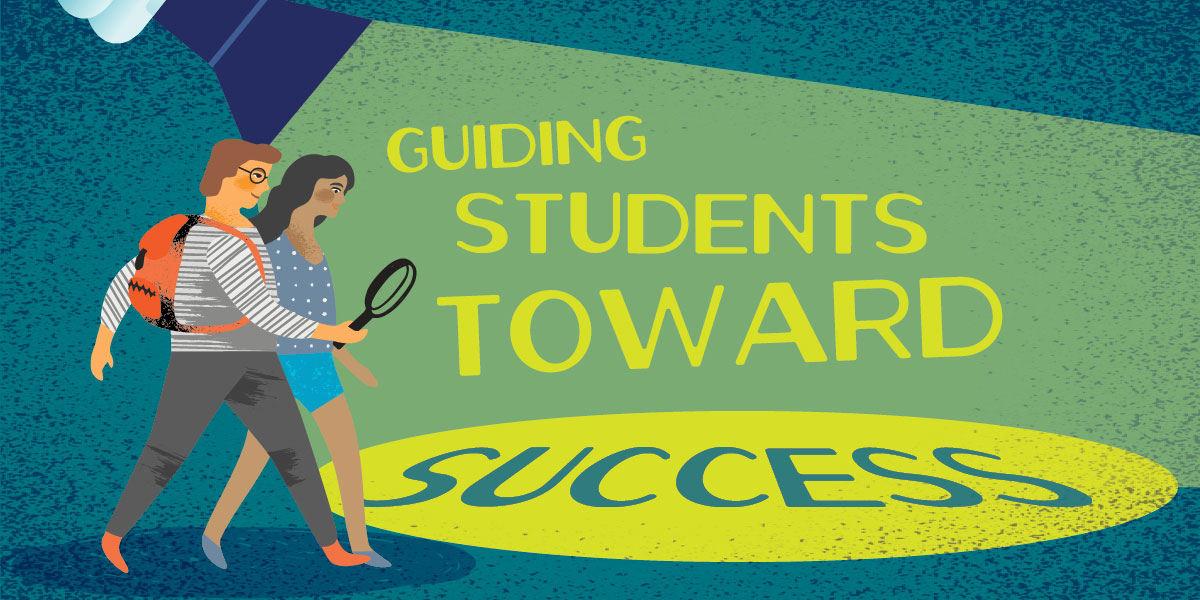
The new student, distracted by noise from the crowd, wandered in circles. She couldn’t tell if she was in the right place. Others around her waited in lines or gathered at tables marked by academic interests. Finally, a helpful fellow student took her aside and guided her to the right spot. She found her name badge and at last could begin her higher education journey.
That new student really was an AACC employee and her guide was one of many Readiness Navigators who came together in the spring as part of a simulation to prepare for the new student experience launching this fall. As part of the college’s strategic plan, “Engagement Matters: Pathways to Completion,” students entering AACC this fall will have an experience quite different from years past.
For the staff and faculty, the “new student” practice run paid off. Five orientation sessions in May and June targeted approximately 500 incoming students. As in the simulation, the atmosphere was electric. The orientation was led by AACC’s student board member, Nyia Curtis, and involved other students, an online game accessed by mobile phones and breakout sessions with advisors.
In the end, students could preregister for fall classes, meet their faculty and interact with fellow students to help ensure they begin – and continue – on the path to achieving their personal and professional goals.
Focusing on engaging students in their academic passions from the point of application through their journey at AACC, the college has envisioned and developed a series of initiatives.
All of the college’s degree and credit certificates have been reorganized into 13 Fields of Interest. The purpose of this structure is to help students make wise choices so they can get on the right path quickly and won’t waste time (or money) completing their goals. Fall 2018 applicants selected their academic preferences under this structure thanks to cross-divisional efforts to update the college’s application, website and related materials and processes.
Following that step, the college overhauled the incoming experience for new students, which was launched in the spring to a targeted group of 2018 high school graduates. The new process included advising as well as faculty liaisons by field of interest. The new Readiness Navigators helped ensure new students completed all the steps necessary to enroll at the college. Thousands of other new students who were not part of the initial group of applicants from high school still received an updated orientation over the summer with redesigned content, including an introduction to Fields of Interest.
Advisors have been assigned to fall 2018 students by their field of interest, and personal counselors have been assigned to students who chose the “general exploration” option (and thus were undecided on a career/major at the time of their application). These counselors will help students assess interest, values and skills with the goal of declaring a major or discipline-specific “explore” program. Advisors have created first-term course recommendations for every major and explore program, and will work with instructors to help students map a program through completion.
While the first few initiatives focus on helping students successfully begin their college journey, “Student Success” (ACA 100) is designed to help students progress through college. This 1-credit course sets students up for success and is being scaled up to serve approximately 900 new students by helping them gain better study skills, manage time more effectively, and set realistic academic and career goals. They also will walk away with an academic plan to guide them through the remainder of their college career.
“Model courses” were defined as higher-enrolled (700+), but lower-success courses (70 percent or below). This fall, all sections of 15 of these courses will be delivered using high-impact practices in the classroom developed by faculty in those disciplines. Practices include instruction, curriculum that represents diverse identities, engaging group assignments and more. In the coming year, these courses could impact as many as 11,000 students.
To further reduce financial burdens on students and help close equity gaps, the college is providing greater access to open educational resources. This means lowering textbook costs for students. The first cohort of the model courses saved students nearly $500,000 in textbook costs. In addition, department chairs are engaging their faculty in discussions of how to lower further the cost of textbooks with the expectation of seeing more savings for students in the upcoming academic year.
There is still more happening at AACC in support of the new student experience. A capital campaign is underway through the AACC Foundation Inc., a collegewide framework for equity and diversity is being implemented, and there is increased emphasis on dual enrollment for students currently in high school, which saw an increase of 16 percent over the past year.